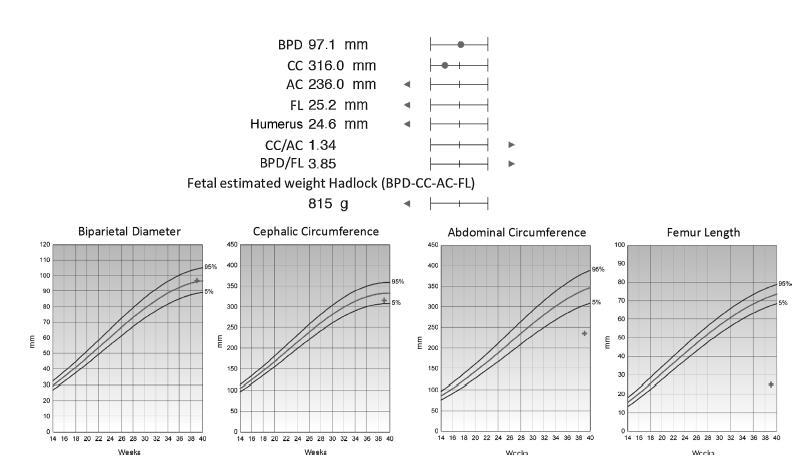-
Case Report
Fetal Skeletal Lethal Dysplasia: Case Report Displasia Esquelética Letal Fetal: Relato de Caso
Revista Brasileira de Ginecologia e Obstetrícia. 2017;39(10):576-582
10-01-2017
Summary
Case ReportFetal Skeletal Lethal Dysplasia: Case Report Displasia Esquelética Letal Fetal: Relato de Caso
Revista Brasileira de Ginecologia e Obstetrícia. 2017;39(10):576-582
10-01-2017Views183See moreAbstract
The clinical management and decision-making in pregnancies in which there is suspicion of lethal fetal malformations during the prenatal period, such as lethal skeletal dysplasia (SD), demand a multidisciplinary approach coordinated by an experienced physician. Based on the presentation of a case of osteogenesis imperfecta type IIA, we offer and discuss recommendations with the intention of organizing clinical and laboratory investigations aiming toward the clinical management, prognosis, and etiological diagnosis of these malformations, as well as genetic counselling to patients who wish to become pregnant.

-
Relato de Caso
Prenatal diagnosis and vaginal delivery in osteogenesis imperfecta: a case report
Revista Brasileira de Ginecologia e Obstetrícia. 2006;28(4):244-250
08-25-2006
Summary
Relato de CasoPrenatal diagnosis and vaginal delivery in osteogenesis imperfecta: a case report
Revista Brasileira de Ginecologia e Obstetrícia. 2006;28(4):244-250
08-25-2006DOI 10.1590/S0100-72032006000400007
Views73See moreOsteogenesis imperfecta is a connective tissue disorder due to quantitative and qualitative anomalies in type 1 collagen, genetically transmitted by a dominant or recessive autosomal gene, leading to bone fragility. We report a case of a 19-year-old G1 PO patient referred to our institution following a screening ultrasound that demonstrated short limb fetal extremities. A level 3 scan was performed which evidenced an irregular cranial shape and compression of the cephalic pole with moderate transducer pressure. Limb shortening, decreased echoes and fractures of long bones were found on our scan evaluation. A vaginal delivery occurred at 35 weeks of gestation. The male newborn, weighing 1.990 grams had 6 and 8 in Apgar scores. The neonate was clearly abnormal, presenting irregular cranial shape, with poor ossification on X-ray, blue sclera, fractures and limb deformities. Postnatal evaluation was satisfactory and the neonate was discharged in good conditions. Prenatal diagnosis is important for an adequate pregnancy follow-up. Postnatal outcome was not related to vaginal delivery, as there were no recent fractures in the newborn.


